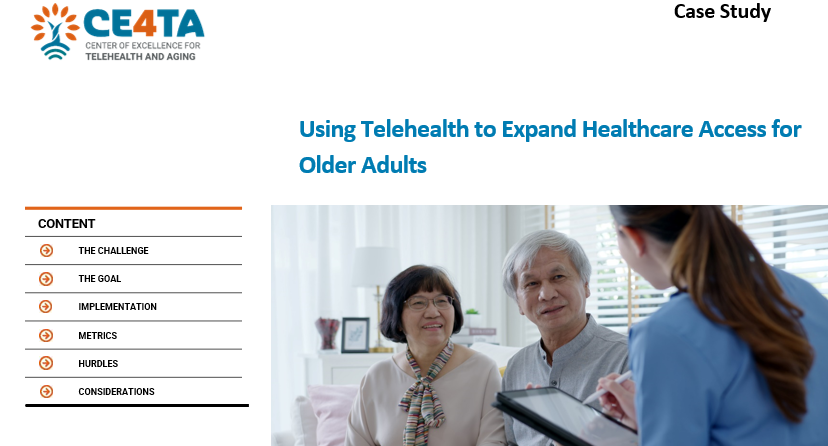Health equity is often at the forefront of many healthcare related discussions and concerns, and this is especially true when considering telehealth. The U.S. Department of Health and Human Services (HHS) defines health equity as “the opportunity for everyone to receive the health care they need and deserve, regardless of social or economic status.”
Toolkit assembled by the University of Virginia to leverage telehealth in long term care and promote best practices for supporting vulnerable populations.
Case study highlighting Jefferson Health’s telehealth program, offering patients diverse care options, and promoting collaboration among providers, patients, and caregivers. The program’s emphasis on provider education and support to providers has resulted in increased comfort in using telehealth with vulnerable populations.
Toolkit to support organizations that want to effectively implement telehealth in post-acute and long-term care settings.
Toolkit to support organizations that want to more efficiently deliver home-based care to older adults.

Case study highlighting how the Geisinger at Home program utilized telehealth services, incorporating a physician extender care model and community health assistants, to expand their outreach to homebound patients in rural areas.
Research report on the HomePal study which provides evidence and policy guidance to ensure effective, quality home-based palliative care through telehealth.
Benefits of Veterans Health Administration (VHA) of geriatric specialty telemedicine service (GRECC Connect) among older patients and caregivers in rural areas
Manuscript describes competencies for telemedicine with older adults for health professionals who treat them.
A study showing gaps in the digital divide between older and young adults using video visits.
Telehealth being available for older adults can only have a clear advantage if there are guidelines in place to help facilitate its deployment and use. This specifically is targeted towards older patients who may be “complex” or “vulnerable” in these settings. The guidelines are sorted into 3 main categories in which each domain must be considered in order to ensure high-quality telehealth-facilitated care will be able to properly be delivered to older adults.
Bringing attention to “ageism” and the common misconception that older adults aging >65 are unable or unwilling to use digital health. However, the use of technology among older adults has significantly increased during the COVID-19 pandemic.
